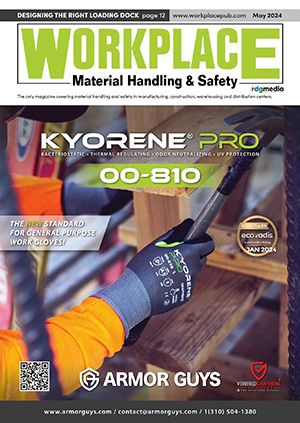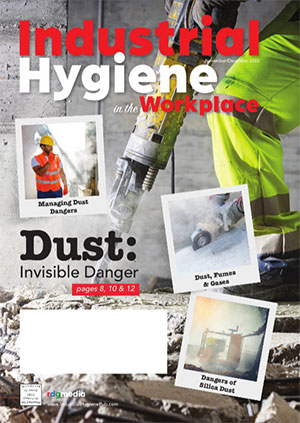Is Your Company Ready for the Slippery Winter Months?
By Joan Mantini
 2020! Already? Where has the time gone? With the new year here, what time could be better to reflect on years past – and learn where improvements are needed.
2020! Already? Where has the time gone? With the new year here, what time could be better to reflect on years past – and learn where improvements are needed.
Let’s start January with looking back at the latest data from the Liberty Mutual Workplace Safety Index, which shows disabling workplace injuries cost U.S. companies $55 billion, and serious non-fatal injuries cost $146.54 million a week in the manufacturing industry alone.
Overexertion continues to lead the list of top-10 injury causes. Representing almost a quarter of all workplace injuries, overexertion (lifting, pushing, pulling, holding, carrying or throwing objects) costs businesses $13.1 billion a year. “Falls on the same level” fall (pun intended) second on the list at a cost of $10.4 billion.
Indeed, everyday safety concerns can be a full-time job in and of themselves, and these statistics give much room for improvement. However, as the winter months are coming to prime, some states can always count on Mother Nature to provide extreme temperatures and slippery, wet conditions for an extra added safety concern—making it that much more difficult to improve upon disabling workplace injury totals. Colder temperatures can bring extra hazards. Beyond the obvious salting sidewalks and clearing snow, companies should be sure to add these steps to their seasonal safety list:
- If you have not already, refresh slip, trip and fall training, pointing out places that snow and ice can make accidents more likely;
- Have workers rotate snow-removal shifts to avoid muscle strains, frostbite or overexertion; and
- Teach workers to walk like a penguin over snow and ice.
How often and through which outlets is your company training on the importance of workplace safety to employees. Is it daily, weekly, monthly? Quarterly? Annually? In reducing workplace injuries workplace safety needs to be a priority for your company’s culture as a whole—have you made it one?
Amongst the articles in the January issue of Workplace Material Handling & Safety, you will find specific standards from OSHA, ANSI, ISO and NFPA, highlighting the standards and regulations that help make the workplace safer and in compliance—not just in the winter months, but throughout the year.
Also in the January issue, readers can discover the key components of shelving excellence. While the use of wire decking may not sit in the spotlight when it comes to warehouse safety, it is undeniably a major factor in how safe a warehouse truly is.
Industrial and warehouse environments are another danger zone for structural columns, rack systems and building corners. Continual hits from forklifts and vehicles can cause serious damage and lead to significant expenses for repair or replacements. The article Columns and Racks and Corners, oh My! talks about how impact resistant products protect these structures and make any warehouse a safer place.
Is your company doing something unique in its training efforts for material handling and safety? If so, send me an email with the details: Perhaps your company could be featured in our “In Perspective” segment in 2020. Have an article idea you would like to see in 2020? Feel free to send me an email letting me know about it as well.



